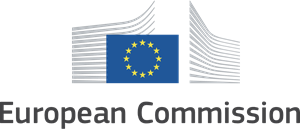The European Union (EU) has faced a series of unprecedented and unexpected challenges since the adoption of the Multiannual Financial Framework (MFF) in 2020. Barely out of one of the deepest global economic crises in more than a century, Russia’s brutal invasion of Ukraine had huge humanitarian, economic and budgetary consequences.
Migration has picked up after the pandemic, putting strains on Member States’ reception and integration capacities. Under the New Pact on Migration and Asylum, the Union and the Member States will be taking on new responsibilities, which imply additional costs.
The steep acceleration in inflation and interest rates has impacted the Union’s budget, amongst others through a sharp increase in NextGenerationEU funding costs.
Following a series of global supply chain disruptions, the EU is working to increase its open strategic autonomy. Significant investment is needed to foster long-term competitiveness in technologies crucial for Europe’s leadership.
Within its current bounds, the EU budget has powered a strong EU response, by drawing from its limited built-in flexibilities and through extensive reprogramming. Addressing these multiple challenges has pushed the resources of the EU budget to the point of exhaustion, hindering the EU budget’s capacity to address even the most urgent challenges.
Today’s proposals seek to provide for targeted reinforcements in a limited number of priority areas, to ensure that the EU budget can continue to deliver on the most essential objectives. The main elements are:
- A Ukraine facility, based on grants, loans and guarantees, with an overall capacity of €50 billion in the period 2024-2027 to cater for Ukraine’s immediate needs, recovery and modernisation on its path towards the EU.
- A reinforcement of the EU budget to address internal and external dimensions of migration as well as needs arising from the global consequences of Russia’s war of aggression in Ukraine, and to strengthen partnerships with key third countries with €15 billion.
- A Strategic Technologies for Europe Platform (STEP) to promote the EU’s long-term competitiveness on critical technologies, in the fields of digital and deep tech, clean tech and biotech. For a quick and effective deployment on the ground, this platform builds on and tops up existing instruments including InvestEU, the Innovation Fund, the European Innovation Council (EIC) and the European Defence Fund, while also introducing new flexibilities and incentives for cohesion funding and the Recovery and Resilience Facility.
- An efficient mechanism to cater for the higher NextGenerationEU funding costs due to the unprecedented surge in interest rates. A new special ‘EURI Instrument’ will cover exclusively the costs that come on top of the original projections that were made in 2020.
In addition, the EU administrative capacity will be adjusted to cater for the new tasks that have been decided by the co-legislators since 2020 and to meet inflation-adjusted contractual obligations.
European Commission President von der Leyen said: “Our budget is a key policy tool to respond to the enormous challenges we face collectively. But pressures are increasing. Today we propose a targeted increase in EU spending to provide stable financial support to Ukraine, to finance our action on migration, and to support investments in strategic industries. We are stronger together.”
Source: EU Office Malta










